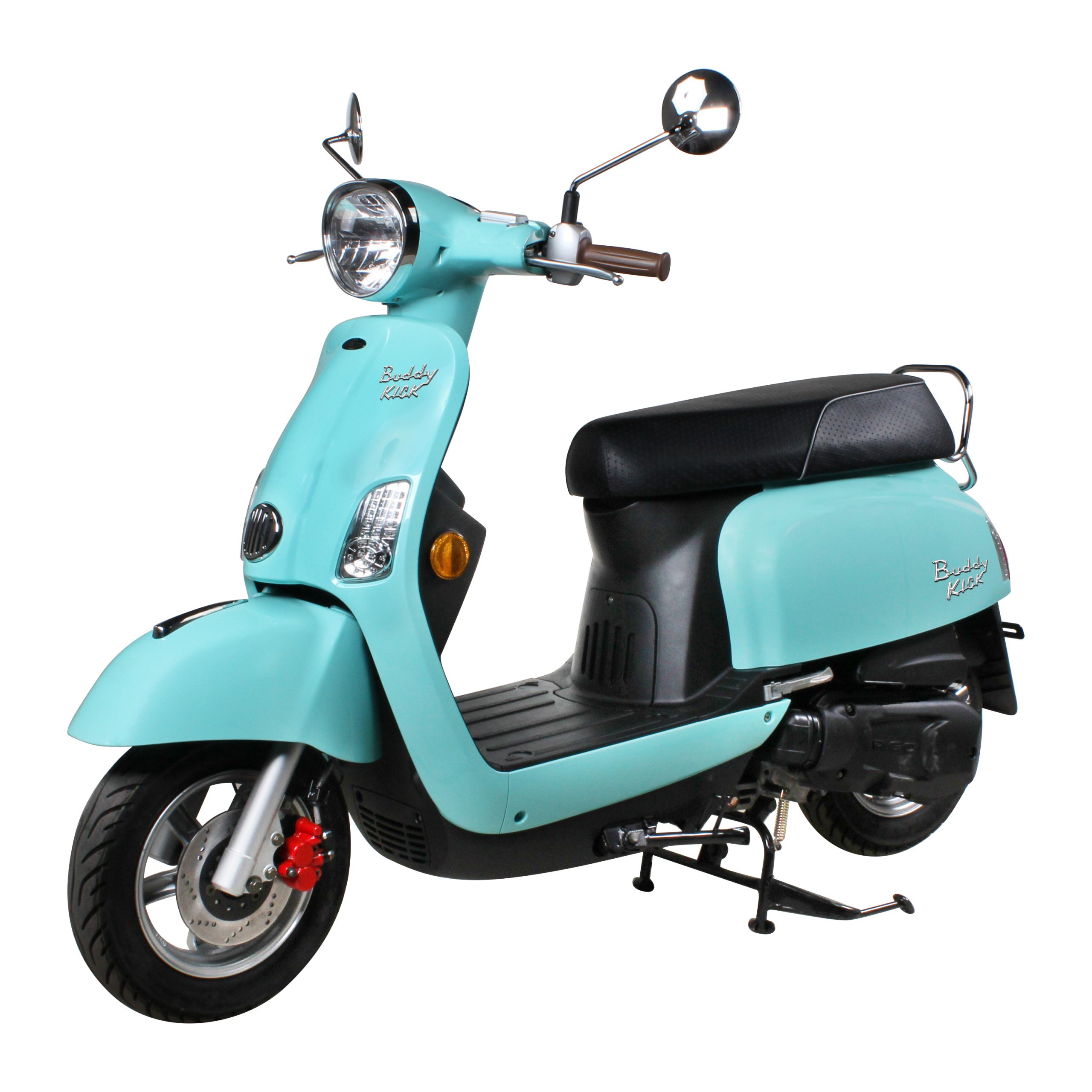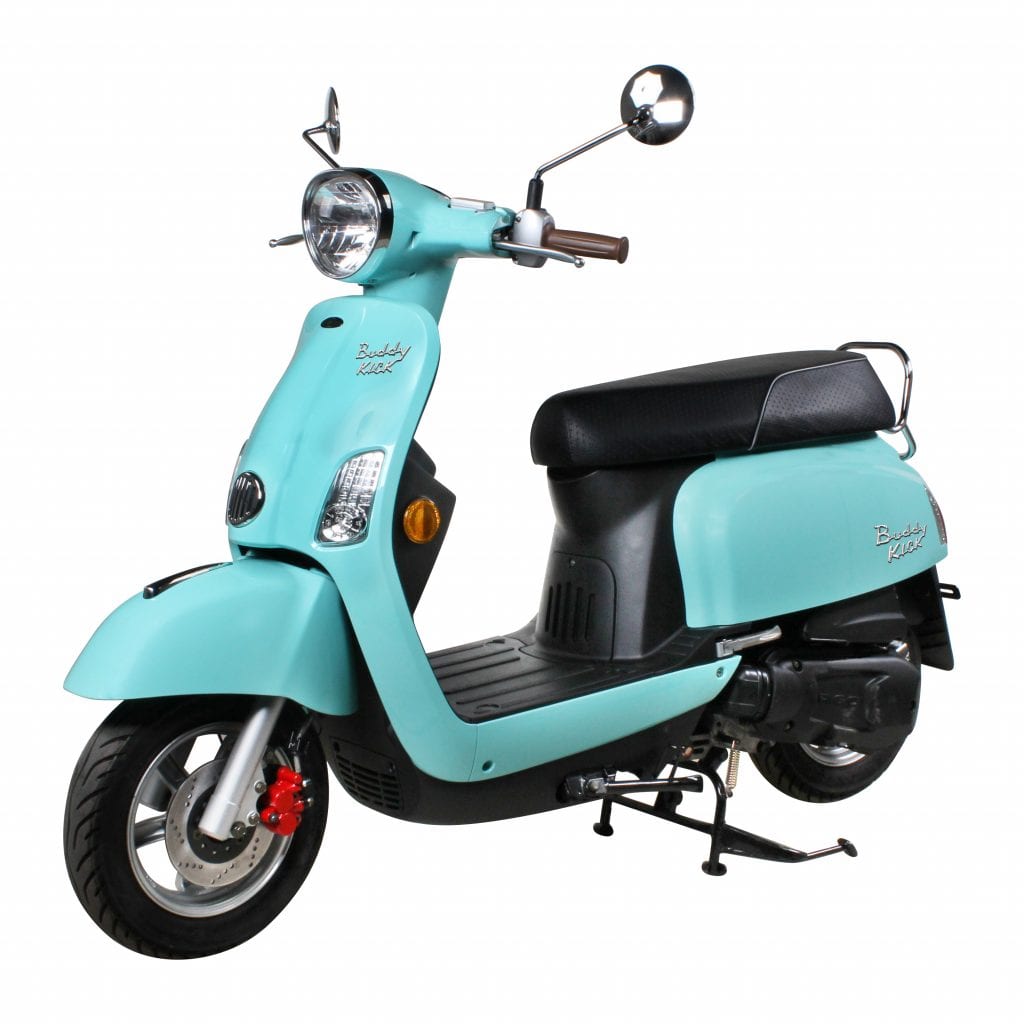GENUINE BUDDY KICK
The Buddy Kick 125 was introduced for 2016 as an attempt to broaden Genuine’s popular Buddy line. Unlike most scooters sharing the Buddy name, the Buddy Kick is almost entirely a different machine, sharing little with the regular Buddy besides a name and the headlight. The Buddy Kick slots into Genuine’s line as an upscale model both in price and features. It remains on sale as of 2019.
Model Background
Most of Genuine’s models are designed and built by PGO of Taiwan, with Genuine acting as the USA importer, distributer and marketer. Thus the Buddy Kick is known in other parts of the world as the PGO J-Bubu which went on sale in 2012.
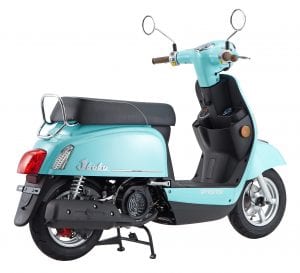
Engine
The Buddy Kick is powered by a completely different and better motor than the regular Buddy 125. This larger bore (54mm) motor is a higher end design that utilizes Bosch fuel injection and 4-valves to boost power and efficiency, although it’s still air-cooled.
The result is a healthy 11.1 horsepower at 8500 RPM, up from 9.5 horsepower in the regular Buddy 125. Genuine claims a top speed of 60+ mph and 100+ mpg, both of which are probably optimistic but you should be able to crack 55mph and 80 mpg with nice driving.
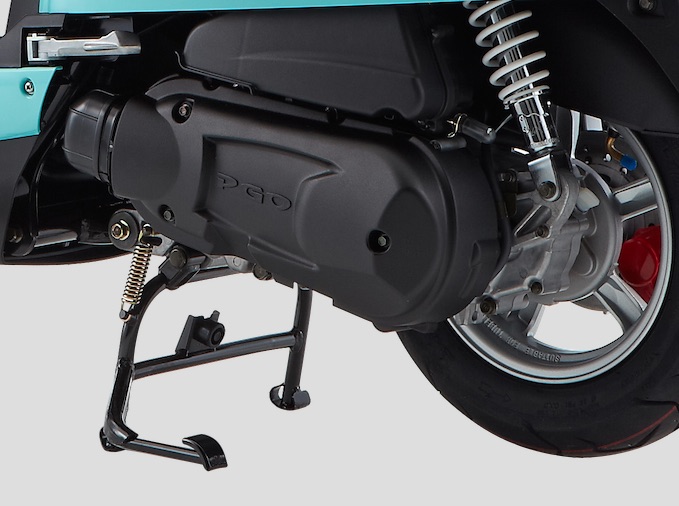
The Buddy Kick offers improved stopping with disc brakes at both ends. Genuine has provided a 180mm disc up front and a 165mm disc in the rear. The addition of the rear disc brake rather than a drum brake is much appreciated. It’s a feature even the more expensive Buddy 170i doesn’t get. The ride of the Buddy Kick should also be improved with the dual rear shocks adding rigidity and more support to the back end.
Storage isn’t great in the Buddy Kick with average space under the larger than average seat. There also a grocery bag hook up front and an open storage bin, which Genuine is calling a cupholder. You’re not likely to find either of these very useful compared to a proper, locking glovebox but they’re better than nothing. If you’re using a thermos the “cupholder” will work well.
Instrumentation for the Buddy Kick is nice with an analog speedo that also provides RPM and trip computer functions. Rounding out the style are a nice chrome rear rack and LED taillights and blinkers, which look great.
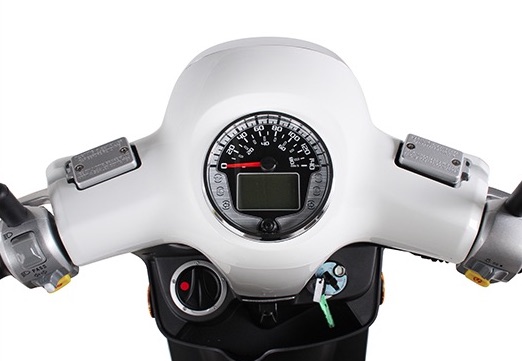
The Buddy Kick adds a new style dimension to the Buddy line, that will likely draw in some buyers that otherwise wouldn’t have considered a Buddy. It takes the classic Buddy headlight and places it on a more angular body that looks both more classic and modern at the same time, compared to the solidly 00’s looking regular Buddy.
Perhaps the biggest question mark with the Buddy Kick is the value proposition. At $3199 it’s $500 more than the regular Buddy 125. It certainly has features to back up the higher price (fuel injection, more power, rear disc) but it may have trouble competing with the Buddy 170i. The Buddy 170i also has fuel injection and while lacking a rear disc brake, offers a lot more motor for just $100 more.

Looking beyond Genuine, there’s quite a few nice scooters in this segment. At $2699, Kymco’s Like 200 offers 163cc and fuel injection, but no rear disc, for a lot less money. There’s also the $2899 Piaggio Fly 150, which is a forgettable but practical machine of arguably higher quality.
If you want to spend more, Honda and Yamaha will sell you their PCX 150 and SMAX models for around $3500-3700. These machines don’t stand out on the specs sheet, but they are a clear step up in design and refinement. If you’re looking for the ultimate in style there’s always a Vespa Sprint or Primavera, which are gorgeous machines but cost nearly $5g.
OWNER REVIEWS (1) – Browse Buddy Kick Owner Reviews REVIEW – Add Your Review
Pros:
– Front and rear discs
– 11.1 horsepower from a 125cc
– LED lighting
Cons:
– Expensive
– No glovebox
– Air-cooled motor
Links:
MotorscooterGuide Forums – Visit the forums on this site to chat about this scoot.
Modern Buddy – The place to go for online Buddy talk.
Key Specs
* Engine: 4-valve, 4-stroke air-cooled 124.5cc single.
* Power: 11.1 HP @ 8500 RPM, 7.7 lbs-ft torque @ 6500 RPM
* Bore & Stroke: 54 mm x 54.5mm
* Transmission: CVT
* Fuel Delivery: Fuel injection
* Wheelbase: 49”
* Weight: 235 lbs
* Starter: Electric only
* Seat height: 28.5”.
* Fuel Tank: 1.66 gal (6.3L)
* Front Brake: 180mm Disk
* Rear Brake: 165mm Disk
* Front Suspension: Telescoping forks
* Rear Suspension: Dual shock
* Tires: 90/90-10” (Front and Rear)
* MSRP: $3199 (USA 2019)
Colors:
2016 – 2018: Glossy Titanium, Tangerine, Turquoise, White
2019: French Vanilla, Glossy Titanium, Tangerine, Turquoise, White

